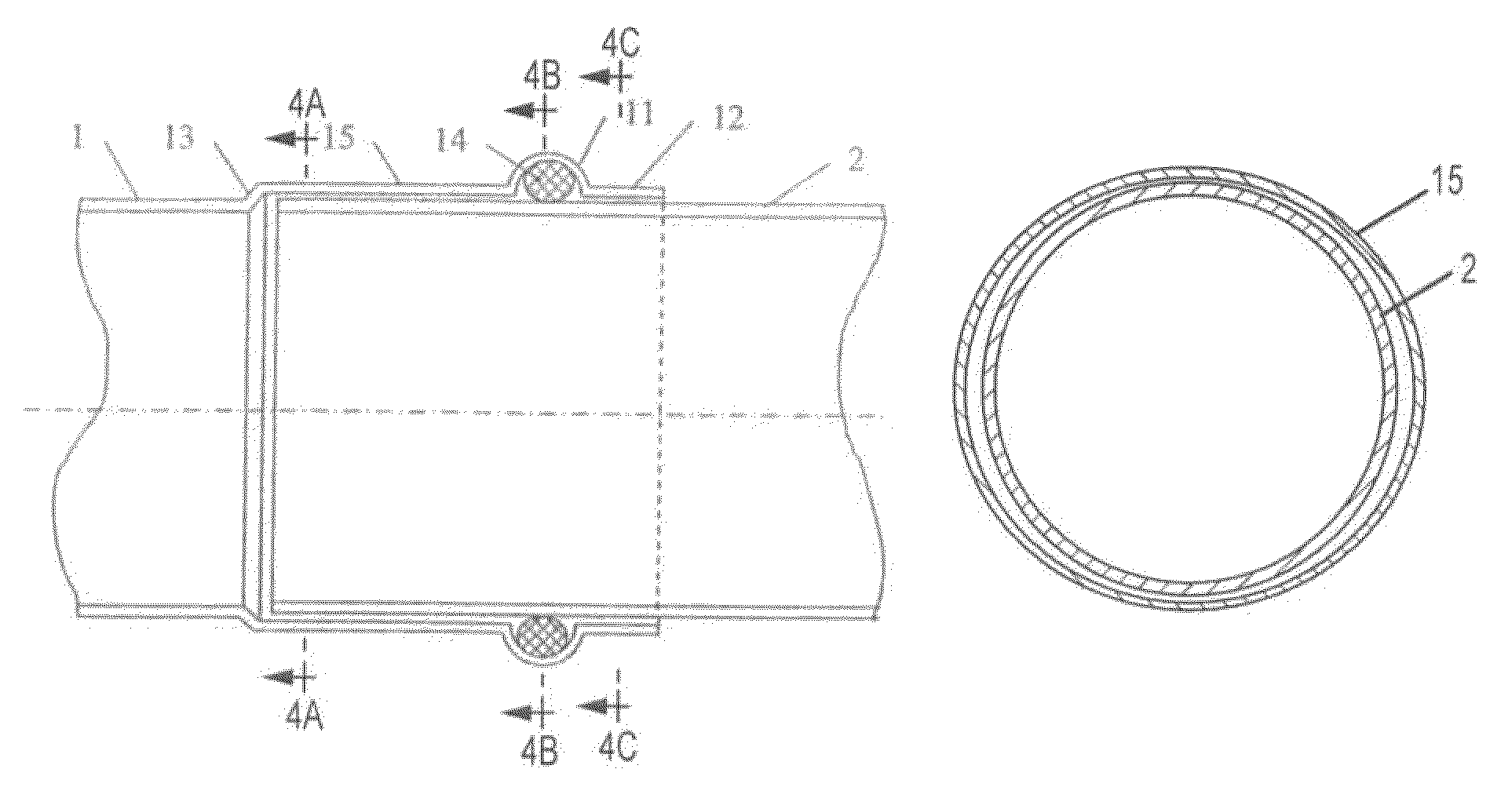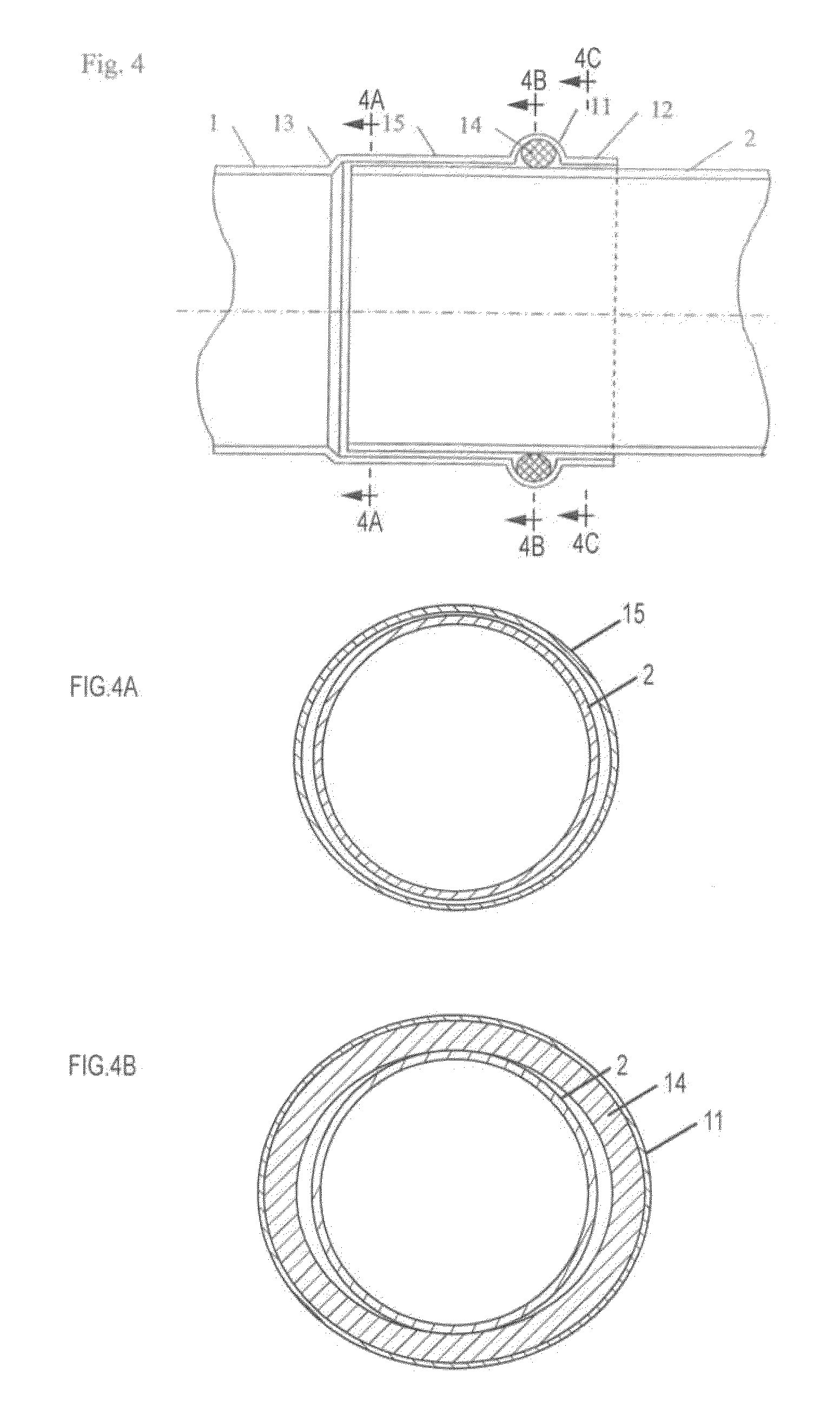Fitting
a technology of fittings and joints, applied in the field of fittings, can solve the problems of large structural damage, difficult production of line pipes of compression connections, and inability to detect leaks, and achieve the effect of reducing diameter and producing inexpensively
- Summary
- Abstract
- Description
- Claims
- Application Information
AI Technical Summary
Benefits of technology
Problems solved by technology
Method used
Image
Examples
Embodiment Construction
[0031]The connecting arrangement for connecting lengths of pipe or tube by compression which has been selected as an exemplary embodiment in FIGS. 1 to 4 and 4A-4C comprises a fitting 1, into each of the two sides of which a length of pipe or tube 2 is slid. The fitting 1 is substantially in the form of a hollow cylinder. It is made of copper. It is also possible to employ other materials, for example special steel, copper, gunmetal or the like. Provided at each of the two ends of the fitting 1 is a ridge 11 which opens into a collar 12 in the direction of the respective free end. The ridge 11 extends radially around the fitting 1 and has a substantially semi-circular hollow cross-section. Here the ridge 11 is constructed at a constant depth relative to the fitting wall. Provided in the ridge 11 is a sealing element 14 in the form of an O-ring. Running round on the outside, there is provided in the centre of the tilting 1, between the two ridges 11, a notch 13 which produces a reduc...
PUM
 Login to View More
Login to View More Abstract
Description
Claims
Application Information
 Login to View More
Login to View More - R&D
- Intellectual Property
- Life Sciences
- Materials
- Tech Scout
- Unparalleled Data Quality
- Higher Quality Content
- 60% Fewer Hallucinations
Browse by: Latest US Patents, China's latest patents, Technical Efficacy Thesaurus, Application Domain, Technology Topic, Popular Technical Reports.
© 2025 PatSnap. All rights reserved.Legal|Privacy policy|Modern Slavery Act Transparency Statement|Sitemap|About US| Contact US: help@patsnap.com



